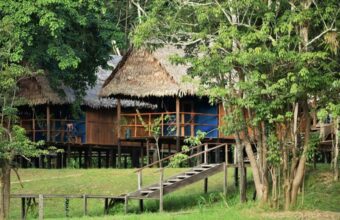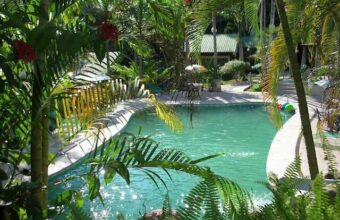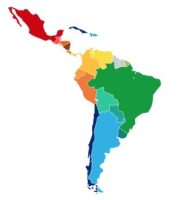Visiting The Peruvian Amazon
An essential travel guide to the Peruvian Amazon
The Andes mountain range runs north to south through Peru, a giant spine splitting the country into distinct geographic regions.
To the west of the Andes lies the coastal strip, a rain shadow area of deserts and large coastal cities. Head east of the Andean highlands and you’ll drop down into the vast and sparsely populated Peruvian Amazon, first to the cloud forested foothills, known as the selva alta, or high jungle, before plunging down into the lowland jungles further east.
The Peruvian Amazon is home to some of the most pristine rainforest in the world. The immense biodiversity provides endless opportunities for wildlife spotting, with jungle lodges, rainforest treks and riverboat cruises catering to adventurous travellers who come to this fascinating part of Peru.
It’s not only the geography that sets the Peruvian Amazon apart from the rest of the country. Culturally, too, the Amazon is distinct. The scattered jungle cities are often a heady mix of fun, frivolity and river port activity, where Peruvians have a laid back but friendly attitude, always ready to drink and dance. Then there’s the jungle cuisine with its seemingly boundless range of unfamiliar fruits, fish, and strange liquors with aphrodisiac qualities. And beyond the urban areas lie indigenous communities, many of whom steadfastly hold on to their traditions, including the sacred knowledge of the shamans and their jungle medicine.
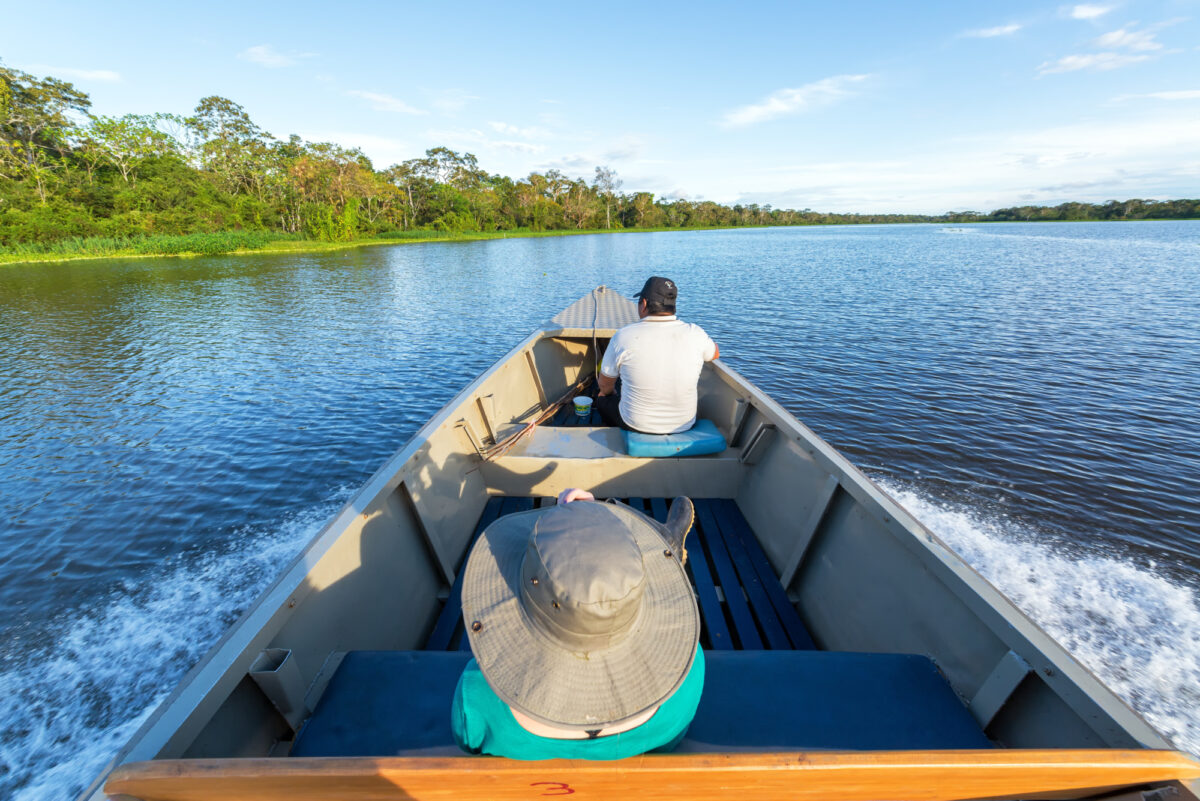
Exploring the Peruvian Amazon from Iquitos
Featured Trips
Visiting the Peruvian Amazon
Iquitos & the northern Amazon
Iquitos, a major city in Peru's northern Amazon, is entirely unreachable by road; to get there you must either fly or take a riverboat. This gives the city an outpost vibe and a sense of adventure just getting there.
This region of the northern Amazon is at much lower altitude than Tambopata, making the landscape considerably wetter – much of the city itself is constructed on stilts, and the lodges are all built above water. Expect to explore by canoe and riverboat, not by foot!
Iquitos is the departure point for multi-day river cruises into the Amazon interior and the Pacaya-Samiria National Reserve.
Most tourists in Iquitos are en-route to a jungle lodge, but there is plenty to see and do in the city itself. Stay for a night or two to explore and soak up the odd but compelling atmosphere.
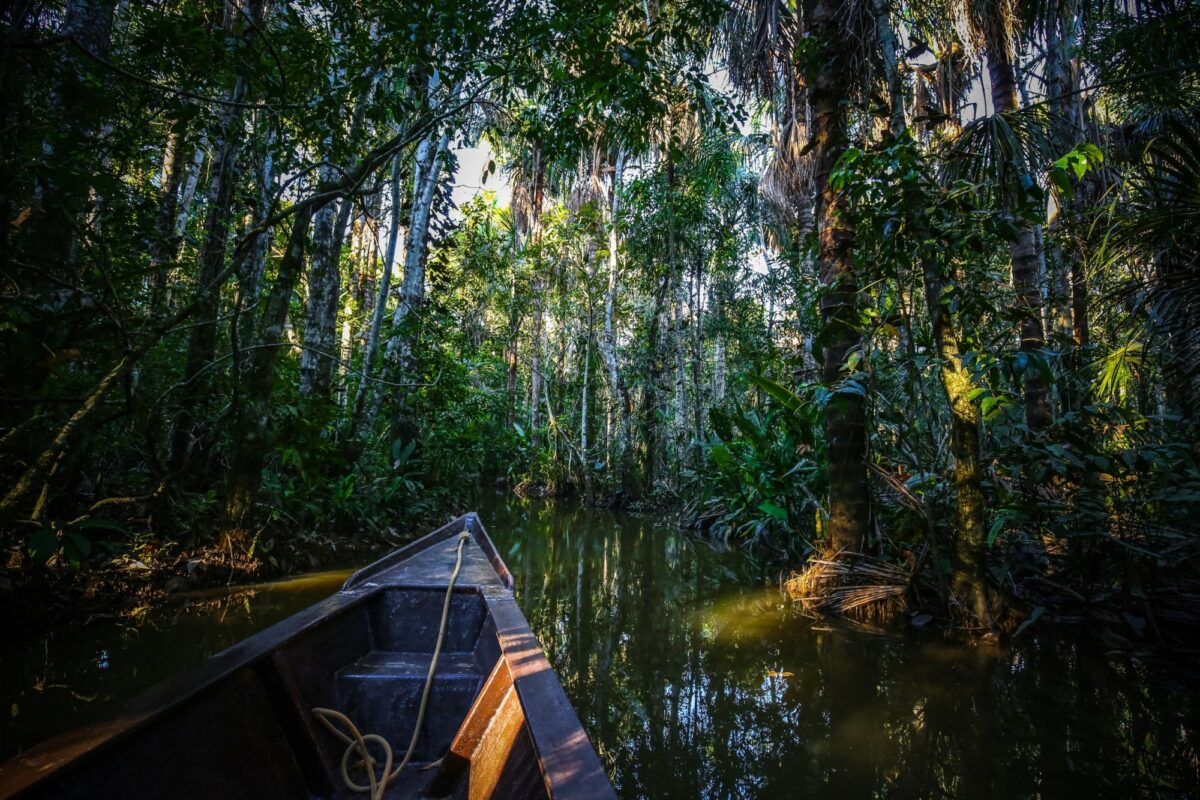
Exploring Tambopata, from Puerto Maldonado
Tambopata
Tambopata National Reserve covers more than 1,000 square miles of rainforest in the Madre de Dios Region of Peru. Puerto Maldonado, the capital of the Madre de Dios Region, is close to the reserve and receives daily flights from Cusco and Lima. Jungle lodges inside the reserve can be reached within two hours. The region's accessibility makes it a popular, and relatively affordable, section of the Peruvian Amazon for visitors.
Jungle trips from Puerto Maldonado to the Tambopata National Reserve typically last three or four days at most. They are easy to arrange and therefore easy to fit into a one or two week itinerary.
Manú National Park
For the ultimate jungle experience, adventurous travellers head into Manú National Park. Covering 6,600 square miles and encompassing lowland jungle, Andean puna grasslands, mountain cloud forest and yunga forests, Manú is an unrivalled reserve of terrestrial biodiversity.
Jungle trips into Manú require more time and planning than those in Tambopata. With no commercial flights to the region, and only infrequent and unreliable light aircraft serving a small airstrip at Boca Manú, just getting to the park is an adventure.

Loading riverboats in Pucallpa
Chanchamayo and the Selva Central
The Selva Central, or Central Jungle, lies slap-bang in the middle of Peru, primarily within the tropical Chanchamayo Province.
Compared to Iquitos and Puerto Maldonado this region draws a fraction of the international tourism numbers, but it is a popular getaway spot for residents of Lima who head here for weekends and holidays.
Accommodation is generally more basic but more affordable, and excursions or guided activities are more scarce.
This part of the Amazon is called the selva alta, or high jungle, and the landscapes are more mountainous and cloud forest as opposed to the classic lowland jungle found deeper into the Amazon.
Oxapampa
Founded by Austrian-German settlers in 1891, Oxapampa is a ranching and coffee centre with a distinct German influence. And 40 miles north of Oxapampa is an even older Austrian-German settlement called Pozuzo, which was settled in 1859.
Buildings in both towns have a Tyrolean look, and some locals still have the blonde hair and blue eyes of their ancestors. Austrian-German food and culture thrive in the region, including traditional customs and a healthy appreciation for locally made beer.
Selva Central
For a more adventurous experience, head about 200 miles north of Chanchamayo to the chaotic port town of Pucallpa on the Ucayali River, a major tributary of the Amazon itself.
It's possible to charter a boat in Pucallpa and head into the rainforest. You'll need to speak some Spanish and be prepared for a fairly rustic trip. On the other hand you'll visit a section of the Peruvian Amazon that few others experience.
Nearby is Lake Yarinacocha, a huge oxbow lake formed by an ancient meander of the Ucayali. You can visit the indigenous Shipibo-Conibo communities that sit along the banks of the lake, where colourful and intricate craftworks are on sale.
Bird spotting opportunities abound, and you’re likely to see river dolphins as you cruise across the waters. You’ll also find jungle lodges dotted around Yarinacocha, ranging from rustic and affordable to luxurious and expensive. Yarinacocha is also known for its ayahuasca ceremonies, in which shamans guide people through lengthy sessions under the influence of the jungle vine.




